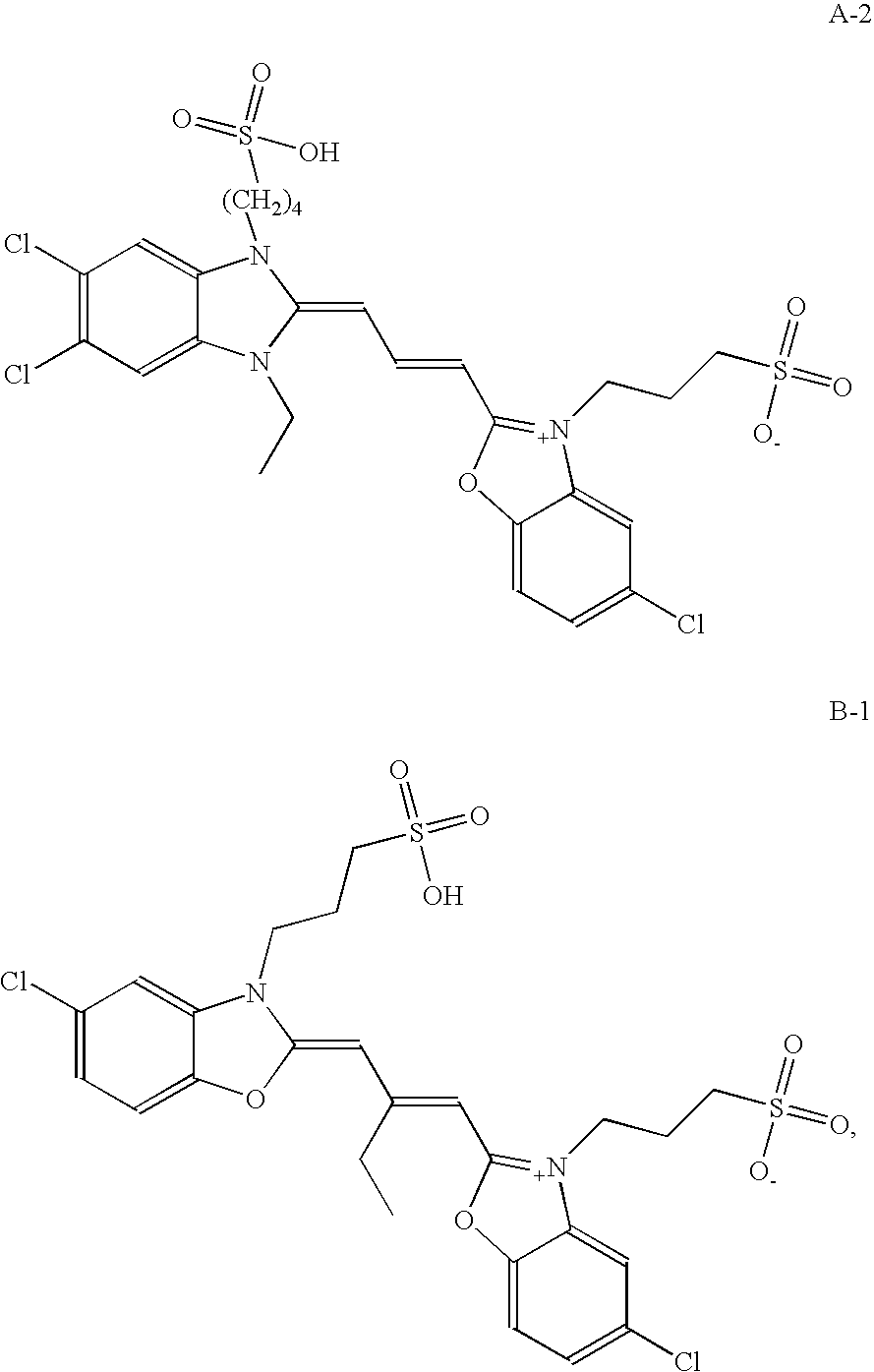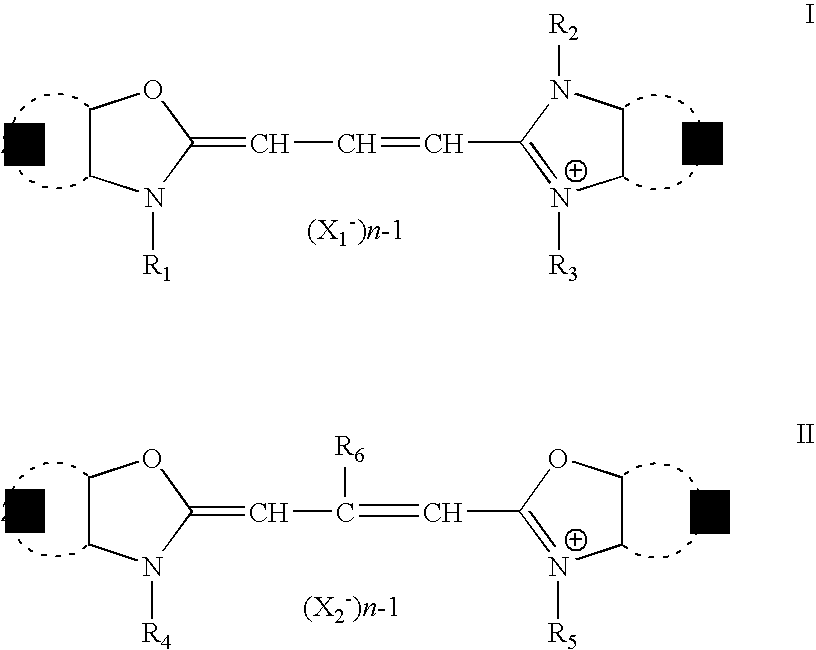Mammography film and imaging assembly for use with rhodium or tungsten anodes
- Summary
- Abstract
- Description
- Claims
- Application Information
AI Technical Summary
Benefits of technology
Problems solved by technology
Method used
Image
Examples
example
Radiographic Film A (Control)
Radiographic Film A was a single-coated film having the a silver halide emulsion on one side of a blue-tinted 170 μm transparent poly(ethylene terephthalate) film support and a pelloid layer on the opposite side. The emulsion was chemically sensitized with sulfur and gold and spectrally sensitized with the following dye A-1:
Radiographic Film A had the following layer arrangement:OvercoatInterlayerEmulsion LayerSupportPelloid LayerOvercoat
The noted layers were prepared from the following formulations.
Coverage (mg / dm2)Overcoat FormulationGelatin vehicle4.4Methyl methacrylate matte beads0.35Carboxymethyl casein0.73Colloidal silica (LUDOX AM)1.1Polyacrylamide0.85Chrome alum0.032Resorcinol0.073Dow Corning Silicone0.153TRITON X-200 surfactant (Union Carbide)0.26LODYNE S-100 surfactant (Ciba Specialty Chem.)0.0097Interlayer FormulationGelatin vehicle4.4Emulsion Layer FormulationCubic grain emulsion51.1[AgBr 0.85 μm average size]Gelatin vehicle34.9Spectral sens...
PUM
 Login to View More
Login to View More Abstract
Description
Claims
Application Information
 Login to View More
Login to View More - R&D
- Intellectual Property
- Life Sciences
- Materials
- Tech Scout
- Unparalleled Data Quality
- Higher Quality Content
- 60% Fewer Hallucinations
Browse by: Latest US Patents, China's latest patents, Technical Efficacy Thesaurus, Application Domain, Technology Topic, Popular Technical Reports.
© 2025 PatSnap. All rights reserved.Legal|Privacy policy|Modern Slavery Act Transparency Statement|Sitemap|About US| Contact US: help@patsnap.com



